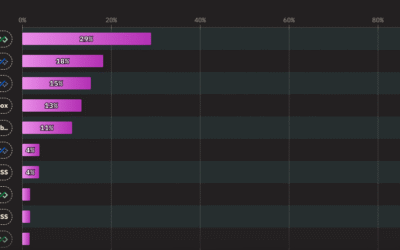Most web designers remember their first time staring at the terminal like it was an alien console in a spaceship cockpit, blinking cursor, endless black void, and not a clue where to begin. It feels cold. Stark. Unforgiving. Yet, hidden behind that intimidating facade is a superpower most designers don’t realize they’re missing.
I remember the first time I needed to SSH into a server to fix a layout bug on a live site. The client was watching. My FTP app kept timing out. So I Googled like mad, copy-pasted gibberish commands, and prayed I wouldn’t break anything. That moment taught me something: command line isn’t just for developers in dark rooms, it’s for problem solvers.
The Craft Behind the Curtain
Using the command line feels like unlocking a hidden door in the back of your text editor. You step into the guts of the web, where files move with whispered commands and folders reveal themselves in vertical stacks like shelves in a minimalist workshop.
Typing ls for the first time is oddly satisfying. It’s like flipping on the lights in a room you didn’t know existed. Then cd project-folder, and you’re inside. No clicking. No dragging. Just precision. Directness. Control.
When you git status, it’s as if you’re speaking to your work. “Where are we at?” And it tells you. Honestly. Bluntly. No spinning wheels or guesswork.
It’s Not About Being a Developer
You don’t have to become a full-stack engineer to benefit from command line skills. For designers, this is about efficiency, autonomy, and understanding your own toolkit at a deeper level.
Want to:
- Compress images without opening Photoshop?
imageminhas you. - Spin up a local dev server in seconds? Hello
npx serve. - Rename fifty files in a flash? Try
renameormvin a loop.
These tasks become gestures, almost like shortcuts in Figma or muscle memory in code editors. You don’t think. You flow.
Confidence is the Real Skill
Once you tame the terminal, something shifts. You walk taller into projects. You stop waiting on dev teams for simple deploys or bug checks. You gain independence and that shows in your work.
And yeah, sometimes you’ll still break something. But now you’ll know how to trace it back, undo it, and learn from it. The terminal becomes a space of curiosity instead of fear.
Start Simple, Stay Curious
Don’t try to memorize 100 commands at once. Start with:
lsto list filescdto change directoriesmkdirto make folderstouchto create filesrmto delete (carefully)git initto version your creativity
Each command is a step deeper into the architecture behind your designs. It’s like finally seeing the entire stage when you’ve only worked with the curtain closed.
Final Thought
As a designer, your value isn’t just what you make, it’s how you move. Knowing your way around the command line is like trading a tricycle for a motorcycle. The road doesn’t change, but how you ride it does.
So open that terminal. Let the cursor blink. Take a breath.
And type.






0 Comments